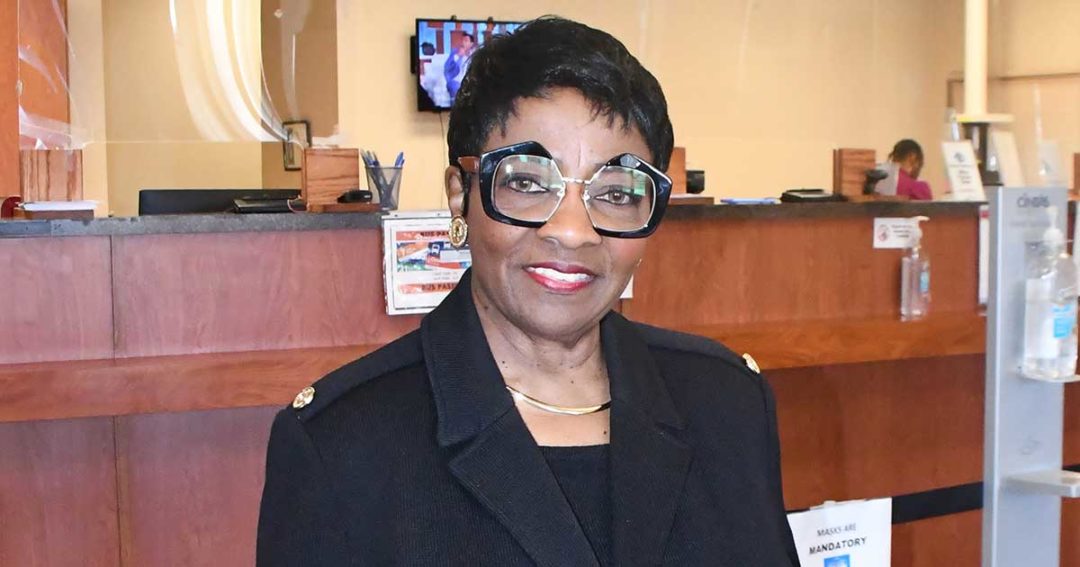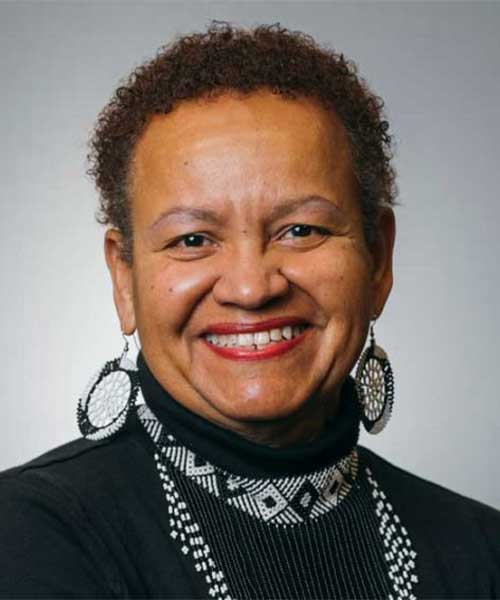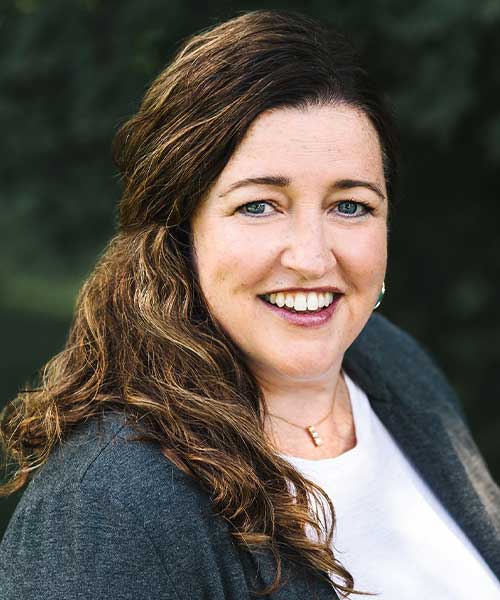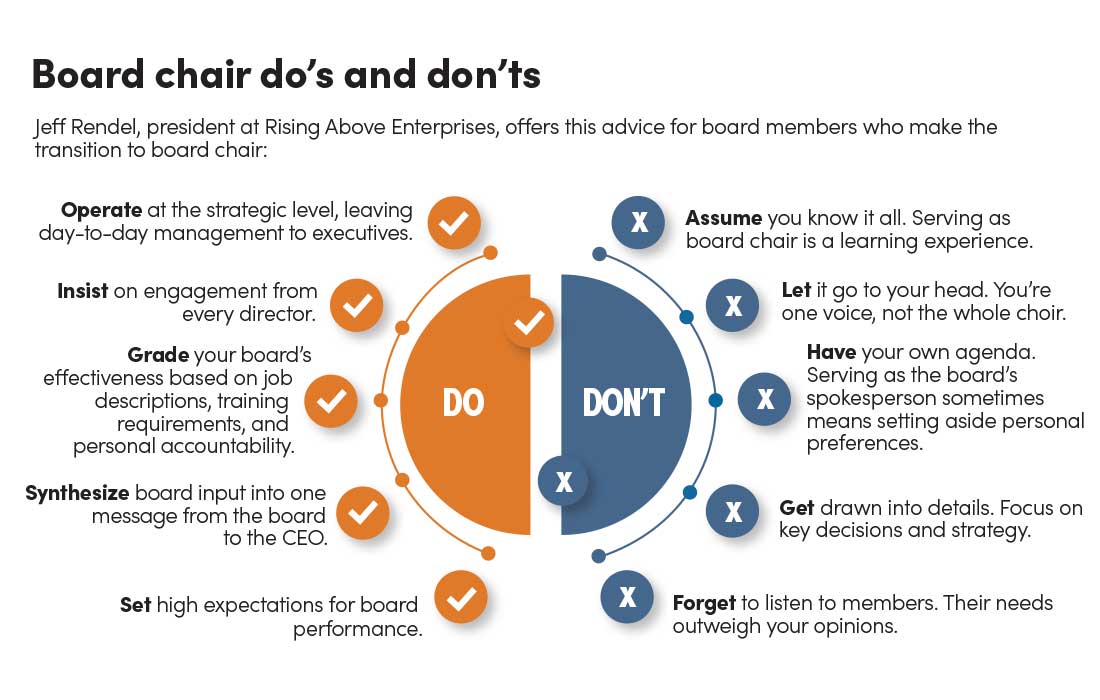
Heir to the chair
The shift from board member to board chair requires new focus and more reflection.
Bishop Dr. Pat McKinstry had a memorable start to her board service at $14 million asset Toledo (Ohio) Urban Federal Credit Union when, during her first meeting, colleagues provided a “total shock” by electing her board chair.
“When I was nominated and asked if I’d do it, I thought, ‘No, that’s too much,’” McKinstry says of the late 2022 meeting. “But I pray for this community, so whatever I can do for it, I will do.”
McKinstry has a long history of uniting people in a common goal. She has 32 years of experience as a pastor, first in the United Methodist denomination and later in the Pentecostal Church, where she sits on the Joint College of African American Pentecostal Bishops. She also leads a charter school and an accredited theological college.
At Toledo Urban Federal, she’s part of a nine-member board that includes other pastors, business owners, a certified public accountant, a Catholic nun, and an attorney, some of whom have two decades of board service. The credit union was founded in a church but now has a community charter.
“What I found with this board was uniqueness with all the different personalities, talents, and gifts that come from different directions and different statuses,” McKinstry says. “Yet we can come together.”
She’s quickly learning about the credit union’s business, meeting with its nine employees and CEO Suzette Collins while “taking a lot of notes and asking probably 1,000 questions a day.”
McKinstry aims to be humble and open to correction as she learns how Toledo Urban Federal fulfills its mission as a community credit union in an urban setting.
Getting up to speed quickly is essential to help the credit union fulfill its new partnership with Bon Secours Mercy Health to offer low-interest loans to homeowners in the central city. Bon Secours is providing $3 million in funding for the five-year housing rehabilitation program.
“The new challenge is working with the partnership, reaching out and renovating the community as a whole,” McKinstry says.
While McKinstry’s journey to board chair isn’t typical, every route to this role comes with a new view and unique challenges. Their perspectives and experiences differ, but board chairs aim to use their leadership role to keep the board focused on key decisions and strategic goals.

‘We have to make sure we’re all aware of our relationship with members and with the leadership team.’
Robyn Cousin
Pivot point
Being elected chair means becoming the board’s pivot point for interacting with the CEO, speaking on behalf of the board to employees and members, ensuring the board meets its own high expectations, and pursuing strategic objectives, says Jeff Rendel, president at Rising Above Enterprises and a former credit union director.
He says the chair’s behind-the-scenes role is critical to engaging directors in decisions and supporting the CEO. An effective board leader assigns directors to committees to evenly share the workload, and facilitates meetings to make sure all voices are heard. That sometimes means going around the table—or virtual meeting screen—to ask each director for input.
“Sometimes the quiet board member is thinking and synthesizing, and has input that’s exactly what the board needs to hear,” Rendel says. “It takes a good board chair to ask, ‘What are your thoughts?’”
Another challenge is turning multiple opinions into a consensus while supporting the CEO’s role in leading an effective executive team and running the credit union. Rendel says board chairs may also struggle with “managing a variety of personalities and involvement levels,” including holding board members accountable for attending meetings and completing required training.
The chair’s role as a conduit between the CEO and board can go beyond meeting professional obligations to impact personal job satisfaction. Rendel cites a CEO who told the board chair that playing on an ice hockey team restored his professional energy.
The chair made sure the full board understood that this outside activity would refresh and likely retain their top executive. Rendel believes this “whole-CEO” approach made for a more effective executive and outstanding strategic results.
NEXT: Sounding board
Sounding board
At $4 billion asset Genisys Credit Union in Auburn Hills, Mich., Board Chair Thomas Healy likes being a sounding board for CEO Jackie Buchanan, who sometimes runs ideas past him before presenting them to the full board. Other institutions frequently approach Genisys about potential strategic alliances or mergers, which are examined for their impact on the credit union’s corporate culture and other factors.
“We’re very selective in considering any potential deal,” Healy says. “Jackie and I may discuss and debate potential initiatives for weeks or even months before she’s ready to make a proposal to the full board.”
Healy has more than 20 years of board experience backed by a 38-year career in sales, marketing, and product management in the information technology and telecommunications industries. The Genisys board typically prepares its leaders by allowing directors to serve on every committee and as vice chair before becoming board chair. Committees are empowered to develop reports and proposals for consideration by the full board.
Healy believes it’s important to let committee chairs and management lead discussions at meetings. “Probably the hardest thing for me is to be quiet,” Healy says. “As chair, it’s important to sit back and not drive the conversation—until it’s time to drive to closure.”
Building a board that represents Genisys’ target market is Healy’s top priority, but attracting and retaining younger board members is difficult.
Michigan law forbids compensating directors financially, which he hopes will change.
“While the time demands are not great, it’s difficult to attract top-level talent to serve on a volunteer basis,” Healy says. “Asking young people to invest their precious time in the credit union instead of their family and job is a big ask.”

‘It takes about a year before you feel like you’ve got your bearings.’
Megan Manahan Bliss
A new environment
Robyn Cousin became board chair at $4 billion asset Affinity Plus Credit Union in St. Paul, Minn., in 2022 after six years on the board, and just as term limits took effect at the credit union. Directors are now limited to serving four three-year terms, creating more opportunities to recruit directors who represent its diverse membership.
“It really changed the role of the chair, because it’s part of the chair’s responsibility to manage the whole process,” Cousin says. That process includes recruiting the right people now to have at the table later for critical discussions, preparing board officers to serve shorter terms, and keeping board term limits in mind when making committee assignments.
“It opens up a whole new realm of future thinking,” Cousin says.
Making sure all directors understand Affinity’s culture, governance, and membership is critical. The credit union used a consultant to guide the board through the delicate process of adopting term limits.
When that created a board with more newcomers than incumbents in 2023, the board asked the consultant to return so all directors were grounded in the same governance approach.
“Having an infusion of new people is certainly necessary,” Cousin says. “But at the same time we need to make sure their values are in line with ours and that they understand the difference between credit unions and banks. We have to make sure we’re all aware of our relationship with members and with the leadership team, as well as the role and responsibility of the board chair.”
Cousin spent 34 years in education, first as a classroom teacher and then in administration, matching community resources to educational needs. She then started a “second career” as business representative for a union serving the state of Minnesota’s employee supervisors, from which she recently retired.
Shortly after becoming a board member, Cousin determined her educational training in diversity, equity, and inclusion was an asset she could share. As board chair, she realized her biggest leadership contribution would come from facilitating meetings and serving as the conduit to the CEO. Being transparent in both roles is important to Cousin.
“I’ve seen how detrimental behind-the-scenes exchanges can be,” Cousin says. “As a leader, I can be transparent and not play games. That makes it safe for the CEO, senior management, and board to be open about what’s going on. Walking your talk matters.”
NEXT: Big decisions, big challenges
Big decisions, big challenges
Megan Manahan Bliss had to help the board make big decisions quickly when she became board chair at $889 million asset Vermont Federal Credit Union in South Burlington, Vt. Her transition to chair occurred in 2019, just before the pandemic began.
Coordination between the board and senior management was critical to adjust operations, and required a new dynamic as remote meetings replaced face-to-face conversations.
Bliss was fortunate to have a strong mentor in Joe Finnigan, the previous board chair who continued to serve on the board. Having joined the board in 2015, Bliss also knew and appreciated the CEO and management team.
“We’re lucky: The senior management team and the board work well together, so [the pandemic] never felt like a crisis,” Bliss says. “The biggest piece of the puzzle was figuring out how to provide services remotely to members while conducting our board business remotely, too.”
She notes that other shifts in dynamics occurred early in her board service when a former board member became chief financial officer, and more recently as board chair when another former director left to lead human resources.

As chair, it’s important to sit back and not drive the conversation—until it is time to drive to closure.
Thomas Healy
“That was probably the more interesting change, going from working with someone as a fellow board member to now working with them as a member of senior management,” Bliss says. “The background of having a relationship with those people already has been invaluable and made the board/management team relationship even stronger.”
Anticipating the greater time demands of being board chair, Bliss, an attorney, stepped away from other volunteer commitments. It was still a jolt when her time commitment to the board increased even after remote communications eliminated the 30-minute drive to attend meetings.
She also had to adjust her communication style in response to remote meetings. When questions went unasked or she feared that board members might be unclear on a topic, her challenge was to be aware of those instances and encourage questions and further discussion.
Shifting to a remote environment eliminated many expectations about how to run the board, which Bliss sees as a benefit. It’s her belief that new board chairs should reject the expectation that they should already know everything required of the role when their term begins.
“It takes about a year before you feel like you’ve got your bearings and know what happens in every cycle of decision-making,” Bliss says. “It’s a learning process, and that’s OK.”
